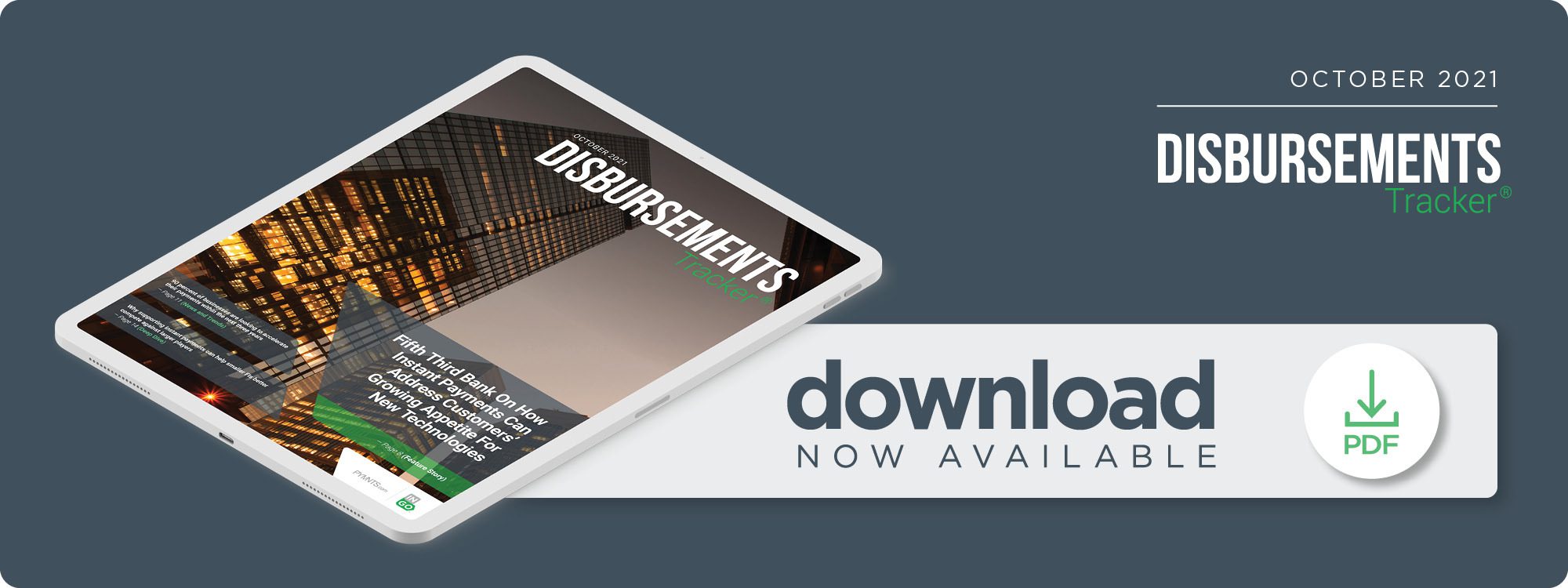Deep Dive: How Smaller FIs Can Use Faster Payments To Better Compete Against Larger Banking Players

The pandemic altered the expectations of consumers around the world, and they now want faster, more on-demand services. To keep up with their increasingly digital needs, businesses were forced to quickly adopt a variety of payment options. Nearly 90% of companies anticipate they will be able to send and receive faster payments within the next three years. Companies turned to their Financial Institutions (FIs) to enable faster payment options — a simpler task for large banks and FinTechs than for some smaller FIs with more limited investment funds and resources.
While the number of customers and overall capital vary across different banking establishments, customers’ needs remain consistent. Businesses, for example, want to use faster payments to post disbursements immediately and automatically and allow for quicker access to funds. More importantly, approximately three-quarters of medium and large-sized businesses said they would factor faster payments capabilities into their decision to maintain or alter their banking relationships in the future, indicating just how crucial it is to offer these capabilities.
The following Deep Dive examines how smaller banks can use instant payments to keep up with their more robust financial competitors. It also explores businesses’ expectations for their current and future banking experiences.
Businesses Expect Faster Payment Options From Their FIs
Small FIs with customer bases that consist largely of corporate clients may need to incorporate instant payments with a greater sense of urgency. A Federal Reserve report showed that 40% of business executives changed banks over the past five years, and 80% of that pool stated they would contemplate switching again for better payments services such as cash flow management, ease of access and enhanced security features. FIs that fail to adapt to customers’ ever-evolving needs risk losing clients to larger, more tech-savvy competitors.
Immediate access to funds is top-of-mind for many businesses. More than 90% believe it is “somewhat” or “very” important, while a mere 8% of businesses considered next-day payments acceptable. Only 16% reported that they would be willing to pay a fee to access available funds within 10 seconds of the initial transaction, however. Microbusinesses are less likely to show interest in faster payment services if it means paying any sort of fee, and 66% of them are not likely to pay for faster payments if the fees are higher than they currently pay in bank fees. ![]()
Most businesses are ready to move forward and make faster payments a reality for their customers. According to the Federal Reserve, nine out of 10 businesses predict having faster payment capabilities for their companies by 2023, with many ready to adopt the technology immediately. PYMNTS’ research shows nearly 27% of small to mid-sized businesses (SMBs) are “extremely” interested in real-time payments settlement, with small businesses often turning to smaller FIs for their financial needs. By contrast, more than 8.4% of those businesses already have access to immediate settlement.
With nearly 90% of business executives saying their companies will have access to faster payments over the next few years, smaller banks that do not innovate accordingly risk losing clients and subsequent revenue to larger banks that have evolved with their customers’ needs.
How Faster Payments Can Help Small Banks Gain a Competitive Edge
Some smaller and community banks may not have the capital that larger banks and emerging FinTechs have at their disposal, but they still can work strategically to implement the latest technologies that consumers demand. More than 75% of businesses surveyed believe it is important for FIs to offer faster payments, but the size of the company plays a role in how they prioritize adoption. While microbusinesses are more likely to find same-day and next-day payments acceptable, one in three micro- and small businesses reported they are accelerating the execution of adoption plans. More than half of microbusinesses look fondly on the idea of switching to faster payments if it will help lower costs. They also show interest in the benefits of payment finality, around-the-clock services, upgraded cash flow and stronger security procedures. Education around the faster payments space may help sway hesitant business owners to incorporate the technology, increasing revenue for both the businesses and their banks.
Smaller banks and community banks have a reputation for their close-knit relationships with customers, but in an increasingly digital world, friendly rapport no longer is enough. Businesses need faster payments because their customers expect them, and banks that cannot provide instant payment services risk losing corporate clients to larger players. Faster payments implementation can be a catalyst for change and may help FIs remain competitive in a saturated market.
